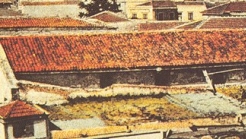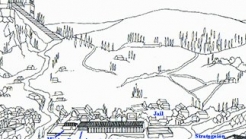

Greece
The canyon of Imvros is located at the prefecture of Chania, close to Sfakia .Spectacular, and with narrow passages, the canyon comprises of rocky formations. The wild flora is intense, ruling everywhere, with trees exploding literally out of rocks and stone.
The canyon of Imvros is located at the prefecture of Chania, close to Sfakia It is not organised, but has a well laid path, so you don’t need a guide. This was once the only “road” to Sfakia, so in essence in many parts we are walking on a well made stone paved road. The length is 8 kms. Spectacular, and with narrow passages, the canyon comprises of rocky formations. Thw wild flora is intense, ruling everywere, with trees exploding literally out of rocks and stone.
It begins after the last houses in Imvros and ends at the Komitades village. The first part passes through a forest of cypress, bushes and maples. In less than an hour’s hike we reach the middle of the canyon, where thre is a venetian puddle of water. From this part on, the most impressive route begins, with the walls of the canyon nearly touching each other in many parts.
The trail is not very hard, takes around 3 hours, and the first exit of the canyon of Imvros leads to the asphalt road that goes to Sfakia.
USEFUL INFORMATION
Visitors should know that there are no fountains, and no people selling water in the canyon, so bringing enough water with you is strongly recommended.


The katholikon of St. Francis monastery was one of the greatest temples of Venetian Candia. When Candia fell to the Turks in 1669, the temple was converted into an imperial mosque dedicated to Muhammad the Conqueror, the conqueror of Constantinople.


Around the middle of the 6th century BC, the Agora of Athens was founded on the northwest of the Sacred Hill of Acropolis. For the following four centuries, it has been the center of the social and financial life of the city. Around the Agora, various public buildings and shrines were erected.


Mochlos is a small bare island located just 150 meters from the mainland. From the name of the island and the opposite settlement has the same name. It is the Venetian Scoglio di Muflo and the area belongs to the community of Tourlotis, from which it is 9 km away. In the Bronze Age, when the sea lev
1039 Ε 6061 01515 00